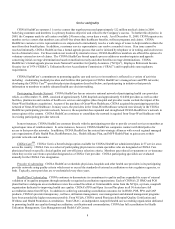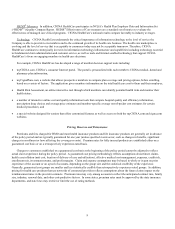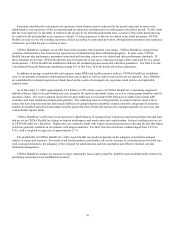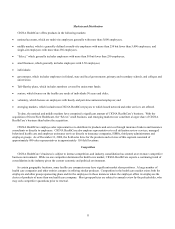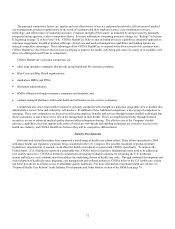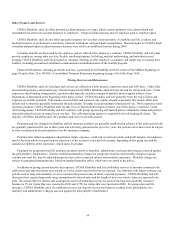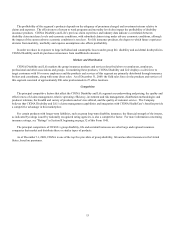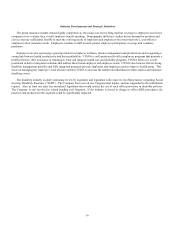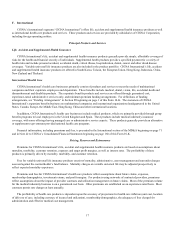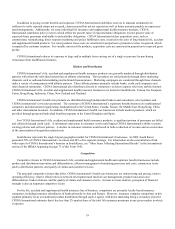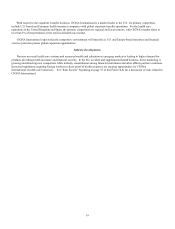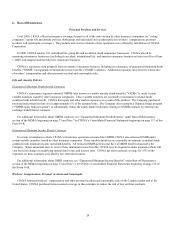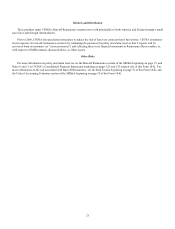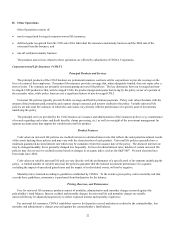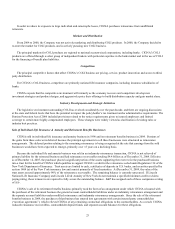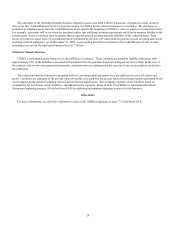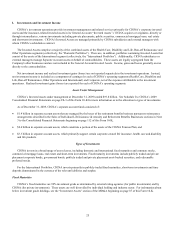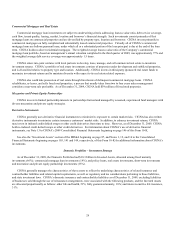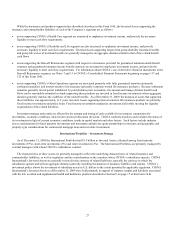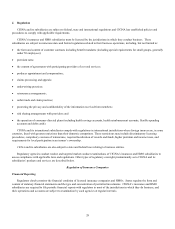Cigna 2009 Annual Report Download - page 38
Download and view the complete annual report
Please find page 38 of the 2009 Cigna annual report below. You can navigate through the pages in the report by either clicking on the pages listed below, or by using the keyword search tool below to find specific information within the annual report.18
In addition to paying current benefits and expenses, CIGNA International establishes reserves in amounts estimated to be
sufficient to settle reported claims not yet paid, claims incurred but not yet reported as well as future amounts payable on experience-
rated arrangements. Additionally, for some individual life insurance and supplemental health insurance products, CIGNA
International establishes policy reserves which reflect the present value of expected future obligations less the present value of
expected future premiums attributable to policyholder obligations. CIGNA International defers acquisition costs, such as
commissions, telemarketing, direct response marketing and policy fulfillment costs, incurred in the sales of long-duration life, accident
and supplemental health products. For most products, these costs are amortized in proportion to premium revenue recognized, which
is impacted by customer retention. For variable universal life products, acquisition costs are amortized in proportion to expected gross
profits.
CIGNA International reduces its exposure to large and/or multiple losses arising out of a single occurrence by purchasing
reinsurance from unaffiliated reinsurers.
Markets and Distribution
CIGNA International’s life, accident and supplemental health insurance products are generally marketed through distribution
partners with whom the individual insured has an affinity relationship. These products are sold primarily through direct marketing
channels, such as outbound telemarketing and in-branch bancassurance. Marketing campaigns are conducted through these channels
under a variety of arrangements with affinity partners. These affinity partners primarily include banks, credit card companies and
other financial institutions. CIGNA International also distributes directly to consumers via direct response television and the Internet.
CIGNA International’s life, accident and supplemental health insurance businesses are located in South Korea, Taiwan, the European
Union, Hong Kong, Indonesia, China, New Zealand and Thailand.
CIGNA International’s health care products are distributed through independent brokers and consultants, select partners and
CIGNA International’s own sales personnel. The customers of CIGNA International’s expatriate benefits business are multinational
companies and international organizations headquartered in the United States, Canada, Europe, the Middle East, Hong Kong, China
and other international locations. In addition, CIGNA International’s health care businesses include medical products, which are
provided through group and individual benefits programs in the United Kingdom and Spain.
For CIGNA International’s life, accident and supplemental health insurance products, a significant portion of premiums are billed
and collected through credit cards. A substantial contraction in consumer credit could impact CIGNA International's ability to retain
existing policies and sell new policies. A decline in customer retention would result in both a reduction of revenue and an acceleration
of the amortization of acquisition related costs.
South Korea represents the single largest geographic market for CIGNA International’s businesses. In 2009, South Korea
generated 29% of CIGNA International’s revenues and 49% of its segment earnings. For information on the concentration of risk
with respect to CIGNA International’s business in South Korea, see “Other Items Affecting International Results” in the International
section of the MD&A beginning on page 71 of this Form 10-K.
Competition
Competitive factors in CIGNA International’s life, accident and supplemental health and expatriate benefits businesses include
product and distribution innovation and differentiation, efficient management of marketing processes and costs, commission levels
paid to distribution partners, and quality of claims and customer services.
The principal competitive factors that affect CIGNA International’s health care businesses are underwriting and pricing, relative
operating efficiency, relative effectiveness in network development and medical cost management, product innovation and
differentiation, broker relations, and the quality of claims and customer service. In most overseas markets, perception of financial
strength is also an important competitive factor.
For the life, accident and supplemental health insurance line of business, competitors are primarily locally based insurance
companies, including insurance subsidiaries of banks primarily in Asia and Europe. However, insurance company competitors in this
segment primarily focus on traditional product distribution through captive agents, with direct marketing being a secondary objective.
CIGNA International estimates that it has less than 2% market share of the total life insurance premiums in any given market in which
it operates.


